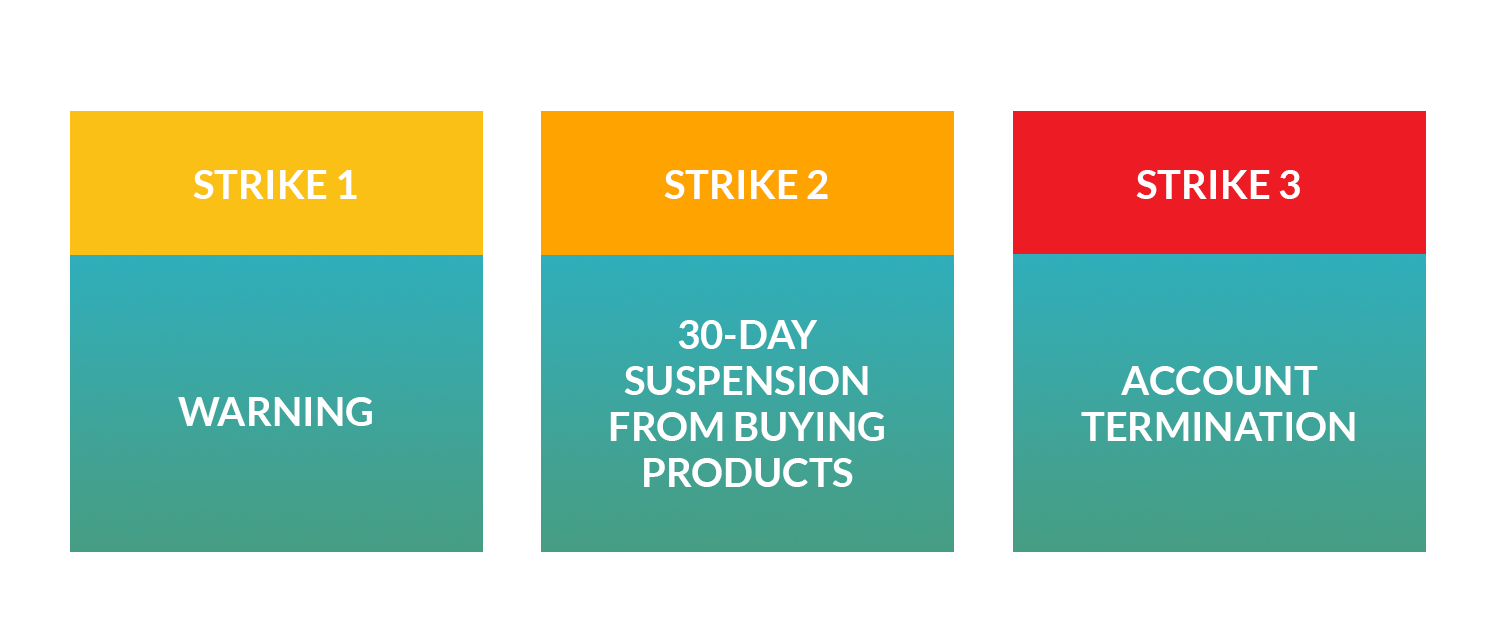Implementing a minimum advertised price policy (aka MAPP) can seem daunting. While there are specific legal implications to this brand protection strategy, it’s really quite simple. In a nutshell, enforcing a MAP policy with resellers is like enforcing a parental policy with teenagers. With MAP pricing, the brand is saying, “if you advertise our products below $X we will no longer sell to you.” A parental policy says, “if you stay out past 10 PM on a school night you’ll lose your cell phone.”
The similarity in these examples is that both of the policies define rules and state consequences for disobeying those rules. They both have one more crucial similarity: if the brand (or parent) does not follow-through on their stated consequences, they lose credibility. With teenagers, this results in them running roughshod over their parents. With resellers, it results in diminished brand equity.
Since this isn’t an article on parenting, let’s focus on how to properly manage and enforce your MAP policy. The two main things we’ll focus on are: what is a MAP violation and what are the consequences for not complying?
What is a MAP Violation?
What constitutes a MAP policy violation varies between brands, and it starts with the elements defined in its policy.
Considerations have to do with practical aspects like, is the brand monitoring prices manually or are they using a price monitoring tool such as MAPP Trap? Another consideration is whether the policy only covers online advertised pricing or includes advertising by brick-and-mortar stores.
Overall, we recommend that if the brand is not going to enforce the defined infraction, they shouldn’t include it in the policy. Here are the basics of an ecommerce/online MAP policy, or as some brands call it, an “iMAP”:
Listing price. This is the basic and most common aspect of MAP policies. It covers the price that consumers (and reseller repricing algorithms) see when shopping. If a seller goes below it, that is a violation.
Listing price + Shipping. A bit more complicated. Some resellers will have a low listing price but a high shipping price. Some brands consider the sum of these to be the MAPP price.
Discount offers. Many resellers will list the price at MAPP but then offer a discount for inputting a specific code at checkout. A variation of this is to advertise that there is a discount of X% at checkout.
Bundling. With this, resellers will offer volume discounts or create packages with combinations of products (including the brands’ products). The rule against this would be that if the aggregate total price of the package is below the MAPP for their product, it is a violation.
If a reseller violates any of the terms listed above, they have committed a MAP violation and should be subject to enforcement.
Enforcing a MAP Policy
Once the brand has established what it deems a policy violation, it should develop a MAP enforcement strategy. Broadly, brands can approach the MAP enforcement process in two possible ways, by using the “Carrot” or the “Stick.”, We recommend a combination of these approaches.
It should be noted that these strategies will only be effective with sellers that actually care about the brand relationship. If they don’t believe the brand will follow-through, or can purchase the brands’ products elsewhere, they may ignore the MAP policy completely. This should incentivize brands to create Authorized Reseller programs because these sellers are the ones with something to lose.
The Carrot Approach: Reward Compliant Partners
Compliance Reward Packages identify resellers that maintain MAPP for a specific time period, then offer them special deals like: wholesale discounts, free freight, extended payment terms, new product previews, or even exclusive items to sell. It’s important to note the brand is NOT rewarding the seller for keeping a specific “sale” price. Rather, the reward is for remaining MAPP compliant.

Since the brand is dealing with accounts that are presumably Authorized Sellers, this tactic shows their high regard for the seller by offering incentives. It can make the retail partners feel more valued and, in some cases, help them to be patient while the brand cleans up the channel of non-compliant and unauthorized sellers.
Although this strategy can be very effective, it can take a greater effort to track and follow-through with rewards. The compliant sellers and the brands’ internal stakeholders need to be notified of and act on any rewards. It’s extremely difficult to manage this process manually.
The Stick Approach: MAP Monitoring and Swift Enforcement
Even the best incentives don’t always work so in order to be consistent and maintain credibility, a brand must follow through on its stated consequences. They need to consider what they’ll actually do by analyzing the internal pain points (financial, operational, and relational) that may occur when enforcing MAPP. We advise that in its quest to enforce compliance, the brand doesn’t punish itself.
Any reseller violating a MAP policy should be informed, in writing, about that violation. The brand needs to send manual emails, automated emails and/or registered letters that inform the reseller of their infraction. Notifications that contain the time, date, price, violation percentage and screenshots are the most effective.
One and done. This is the most severe consequence that brands employ. If the reseller violates MAPP, even once, they immediately get notified that they are no longer authorized to sell the brands’ products. As such, they will no longer be able to purchase from the brand or its authorized wholesale distributors.
Incremental suspensions. Many brands will remove privileges on an escalating basis (e.g., 3-strike enforcement). Some examples include: increasingly long suspension periods (30-days, 90-days, then termination), gradual product line exclusions, or even loss advertising and/or co-op funds, payment terms, or discounts. Before using an incremental approach, brands should consult with their legal counsel.
MAP Violation Enforcement Best Practices
As noted above, the strategies and tactics that brands use to enforce MAP policies are varied. And since brands are not allowed to collude or agree to boycott, the enforcement practices are determined and implemented unilaterally. There are some “best practices” though. Here are a few:
Rollout period. Prior to launching the enforcement phase of a MAP policy, many brands will spend two to four weeks sending notices to all sellers that announce their intention. This gives sellers fair notice and allows them time to sell-off slow-moving inventory.
3-strikes strategy. While some attorneys advise against this, most brands employ an incremental approach.

Authorized reseller policies. Over the past few years, many brands have begun to adopt this type of policy. Not only is it good for classifying sellers, it makes it easier to pursue gray market sellers and lays the ground for potential lawsuits.
There is no “tried-and-true” technique for gaining MAP policy compliance. Much depends on the brand’s strength with consumers and its relationships with distribution partners. In the end, however, implementing and enforcing this strategy is essential to building and maintaining a brand’s equity and longevity.
MAPP Trap has been assisting brands with their compliance efforts for nearly 10 years. Although online brand protection strategies continue to evolve, the ones listed herein have proven to be the most effective. If you’d like a free consultation or need help improving your online footprint, please reach out to us at 303-670-5111.